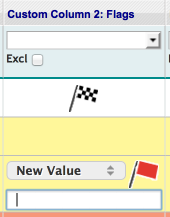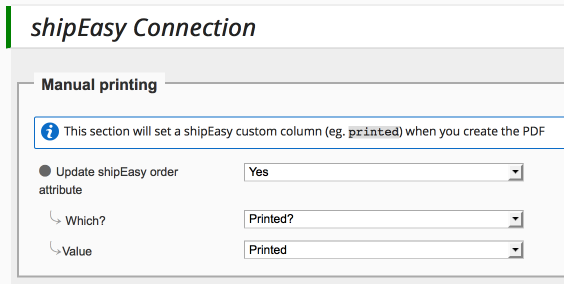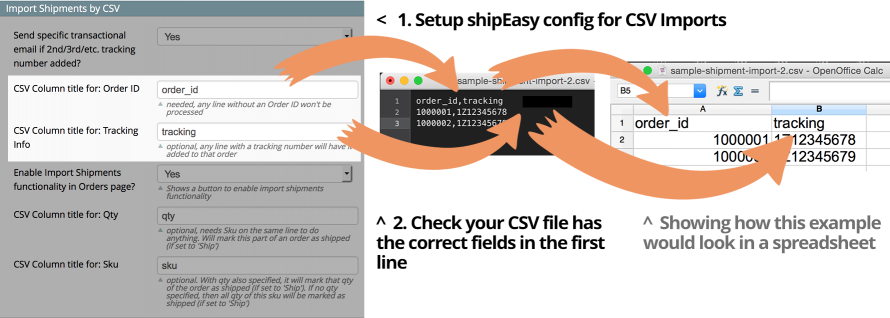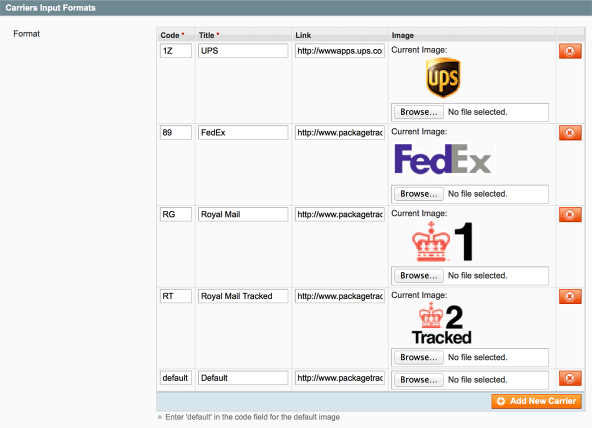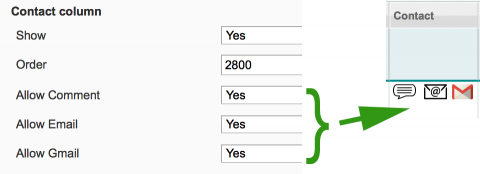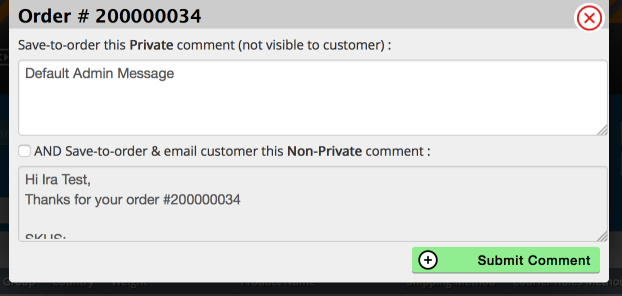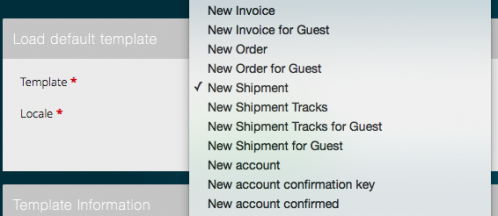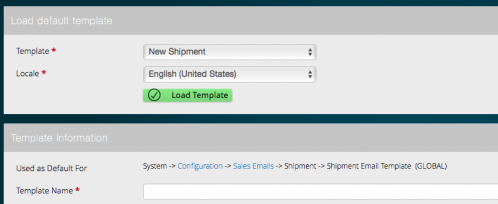Difference between revisions of "shipEasy Quickstart"
m |
m |
||
| Line 1: | Line 1: | ||
| + | {{#description2:Get up and running quickly with ShipEasy with this step-by-step guide. You'll be optimising your orders page and shipments in no time. }} | ||
[[File:ShipEasy_Magento_OrderGrid.png|link=https://moogento.com/shipeasy|border|323px]][https://moogento.com/shipeasy Get shipEasy today((.buy))] | [[File:ShipEasy_Magento_OrderGrid.png|link=https://moogento.com/shipeasy|border|323px]][https://moogento.com/shipeasy Get shipEasy today((.buy))] | ||
==Aims & Preparation== | ==Aims & Preparation== | ||
Latest revision as of 15:15, 27 September 2020
Contents
- 1 Aims & Preparation
- 2 Column Display & Ordering
- 3 Store & Website Logos
- 4 Order Flags & Custom Attributes
- 5 Shipping Addresses
- 6 Import Tracking for Orders
- 7 Setup Carriers for Tracking
- 8 Out-of-Stock Items
- 9 Out-of-Stock Orders
- 10 1-Click Contact Customers
- 11 Mass-processing Orders & Setting Order Status
Aims & Preparation
Most of this is included if you get the Installation & Setup Service
Let's get shipEasy up and running in a couple of minutes.
If you don't have it installed yet, follow the Easy Install Guide to get shipEasy running.
shipEasy is great with Magento 1.6x and later - if you're rocking an earlier version, get in touch before installation.
Column Display & Ordering
Head to the SystemConfig > Moogento / shipEasy and find the Grid Columns Setup. It's probably good to have the SalesOrders page open on another window. Then go through and remove/add/reposition the Magento order columns to suit your store and way of working. You will likely tweak this over the next few weeks, so just get the obvious ones now.
It's really easy to set & position the columns with shipEasy's dragNdrop system:
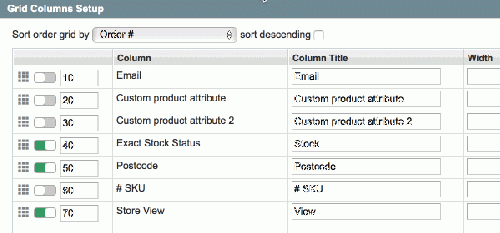
Suggestions:
- Do you need both 'GT' columns? We have a new 'Paid' column for you, which means you can maybe turn off the 2 x GT columns.
- Do you need to see both 'Billed to' and 'Ship to' columns? If they are usually the same, probably 'Ship to' is enough...
- SKU is a useful one for most stores.
- You'll want the 'Action' column - this allows you to click into an Order Detail page.
Store & Website Logos
This really helps get a quick visual overview of where the orders are coming from. When this is enabled you'll see your store logo(s) in the Magento Orders page.
- Grab our pre-made logos for popular options (eBay, Amazon, Rakuten, Play) here: zipfile > _sample_images / sample_website_images
- To make your own store image:
- Load into Photoshop or equivalent, this template: zipfile > _sample_images / sample_website_images / Template_website.psd
- Resize your store logo to fit in this template.
- Save this as a transparent png-24 file.
- Head to shipEasy config > Grid Columns Setup -> Store (and/or Website) and set Replace with image > Yes and then upload the images for each store.
Remember to setup Website Column and/or Store Column depending on your setup and how you want to filter orders.
Order Flags & Custom Attributes
Quickly and easily set meaningful flags on orders, direct in the Magento Orders page.
A flag can be an image (including custom ones), preset text, custom text, or the current date.
- First up, find the custom columns and turn them on. We've pre-filled some values to get you going fast.
- In shipEasy Config > Grid Columns Setup find Custom Attribute 1 and turn it on.
- For flags you can use:
- Preset images:
- Just include any of these:
{{flag_red.png}}{{flag_orange.png}}{{flag_green.png}}{{flag_grey.png}}{{flag_shipped.png}}{{flag_checkered.png}}{{flag_alert.png}}- in this format:
Red Flag|{{flag_red.png}}- (In this example
Red Flagwill show as the dropdown option, and the red flag image will show in the Orders grid.)
- Custom images:
- Save .png images in skin / adminhtml / default / default / moogento / images / flag_images /
- If you're using a custom admin theme you might need to duplicate that folder structure and files into your theme.
- Use that filename in this format:
Custom Flag Text|{{custom_flag_image.png}}- (In this example
Custom Flag Textwill show as the dropdown option, and the custom flag image will show in the Orders grid.)
- Custom text:
- Enter in this format:
Custom Text|#FFFFFF- (In this example
Custom Textwill show in the orders grid on a white background (#FFFFFF= hex code for white).)
- If you're not sure about hex codes, check here.
- Preset images:
Set A Flag
Set an order flag a couple different ways:
- Clicking - just click the space in an order and you'll see a dropdown menu. Click the value you want to set and it will set it immediately.
- With the mass-action menu 'sE Update Custom Attribute' - select the orders you want to apply the flag to, choose the option, and click the Submit button (or the 'Process Orders' button if you're using Clean).
- Automatically: With pickPack, set an order flag when you create a PDF (eg. you can show 'printed' so that you can easily keep track of where each order is in the processing line).
- When choosing a flag option, you can also select 'New Value' which will pop up a text box to enter a custom flag value.
Reset A Flag
Want to change a flag to blank? Check that in the config for that column you have a blank option, then either:
- Select multiple orders, then Actions Menu > sE Change Custom Attribute > [choose column to change] > [choose blank option] then Submit,
- or, Click the 'Flag' on a single order, and choose the blank option from the dropdown menu.
If you don't have a blank option set in the config, you can :
- Clear the obvious flags by entering a double space in 'New Value':
- Or, edit the values of the flags - if you're missing a blank option, just add one in the config, by entering a space on a new line.
Set a 'Printed' Flag Automatically
shipEasy has a built-in feature to auto-set one of the custom flags when you manually print an order using pickPack.
- Look for the shipEasy Connection > Manual printing section in the PDF that you want to trigger the 'Printed' field.
- Set the column that you want to change, and what you want it to change to.
- The default is "Printed" inside a "Printed?" column.
- When you create a PDF, that column will now show 'Printed' - you can now easily see which orders you've already printed, and save money by:
- Not double-printing
- Not double-shipping
- Happier customers and staff : more sales
Show a Custom Product Attribute
Need to show more specific product info than just the product name or SKU?
shipEasy allows you to show up to 2 custom attributes in the grid.
- Slide-to-green the 'Custom product attribute' row
- Choose the attribute from the dropdown
Shipping Addresses
This is one the great missing features of Magento, if you ship physical products. Now you can see the full shipping address of each order, before printing and processing, check for address problems, and help sort orders.
- shipEasy Config > Grid Columns Setup / Name column > Show Address? set to Yes and you're away.
If you ship to multiple countries, turn on the country column while you're here. This will show a filterable country flag column.
Import Tracking for Orders
shipEasy can help with administering tracking for your orders. You can now easily add tracking numbers per order, or by the hundreds, in seconds!
On the SalesOrders page
- Enable the tracking column,
- Select each order,
- Enter the tracking info,
- Choose sE Ship / sE Ship & Invoice
- Submit
Via CSV Import
- Before importing, setup the .csv columns in SystemConfigShipEasy > Import Shipments by CSV : make sure the first line of your .csv has these values.
- The default for 'Order ID' is
order_id - The default for 'Tracking Number' is
tracking - Check the sample .csv file.
- On the SalesOrders page, click Import Shipments
- Select your .csv file to import
- Choose the actions that you want to happen.
- shipEasy is pretty powerful here, you can choose multiple actions, like setting a custom shipEasy attribute, choosing whether or not to email the customer, etc.
- If you're not sure what to choose sE Ship & Invoice will ensure that it processes all orders (even if an order is not Invoiced, it will Invoice and then Ship it).
- Run Import
If you want to show custom carrier images and tracking links, check Setup Carriers for Tracking as well.
Import Additional Tracking Numbers
shipEasy can deal with assigning a second tracking number to orders. This is handy e.g. if you have a two-stage shipping process.
- Just import the order a second time via CSV Import, with the second tracking number in the tracking field.
- Before doing this, you'll probably want to setup a different email for this second tracking number, to not confuse your customers.
- Simply create a new SystemTransactional Email template (for guest and member) for 'Shipment Tracks' - you'll see this new option in the Template options.
- And then set the SystemConfigShipEasy > Import Shipments by CSV section to specifically send this email:
Import Customer Comments
When importing tracking, etc. via csv upload, using shipEasy, you can also upload comments to each order.
Like other csv values, you can set the filed that it looks for in the config.
These are the default fields it looks for:
- order_comment : admin-only comment
- order_comment_public : can be seen by customers on the frontend
Setup Carriers for Tracking
Aka. show a nice logo for each carrier, and auto-set the carrier based on the tracking code.
- If a carrier has multiple tracking number formats, make a new entry for each.
- The idea here is that once setup, you're saving 3 clicks per manual entry, as no need to select the carrier after entering the tracking number.
- Head to Carriers Input Formats
- The idea is to set each carrier that you use, and repeat for each format of tracking number that they use.
- Enter the first few characters for each carrier's tracking number format in Code
- This will be pattern-matched, eg. if a tracking number from the carrier is
1Z128734234282then enter1Zin this field. - The tracking codes that are used vary by carrier, country, shipping type, date : you need to look at your recent tracking numbers to know what to put here.
- Enter the code
defaultfor what to show for all non-matching tracking codes.
- If all your shipments are the same carrier then you could just put
defaultas the code, and it will match all tracking numbers.
- This will be pattern-matched, eg. if a tracking number from the carrier is
- Enter the name of this Carrier in Title
- Upload an image for this Carrier in Images.
- We have some common carrier images prepared zipfile > _sample_images / sample_carrier_images
- Add the tracking URL for this carrier in Link putting
#tracking#where the tracking number would go.- If you need to add the shipping address postcode to the url, add
#postcode#, and it'll be auto-populated.
- Here's some popular tracking URLs for easy copy/pasting:
- If you need to add the shipping address postcode to the url, add
| Carrier | shipEasy Tracking URL | ||
|---|---|---|---|
| Parcelforce | http://www.parcelforce.com/portal/pw/track?trackNumber=#tracking#
| ||
| Royal Mail | http://www.royalmail.com/track-trace?trackNumber=#tracking#
|
or: | http://www.packagetrackr.com/track/royalmail/#tracking#
|
| UPS | http://wwwapps.ups.com/WebTracking/processInputRequest?tracknum=#tracking#
| ||
| FedEx | https://www.fedex.com/fedextrack/?tracknumbers=#tracking#
| ||
| DHL | http://track.dhl-usa.com/TrackByNbr.asp?ShipmentNumber=#tracking#
| ||
| TNT | http://www.packagetrackr.com/track/tnt/#tracking#
| ||
| Hermes | http://tracking.hlg.de/Tracking.jsp?TrackID=#tracking#
| ||
| USPS | https://tools.usps.com/go/TrackConfirmAction_input?qtc_tLabels1=#tracking#
| ||
| EMS | http://www.packagetrackr.com/track/ems/#tracking#
| ||
| TOLL AUS | https://online.toll.com.au/trackandtrace/showConnotes.do?connote=#tracking#
|
Manually set carrier for specific orders
Hover over the tracking link (eg. 'Custom') to see the options:
- Edit tracking number and/or carrier
- Add a new tracking number to this order
- delete this tracking number
If you click the 'edit' button, you can then set the tracking number and/or carrier.
- Choose the carrier in the dropdown
- Enter the tracking number in the text field
- Choose to send the customer a notification
Out-of-Stock Items
Very handy this, how you use it will depend on how you run your store, but essentially you can quickly see orders which have out-of-stock orders in.
You could use this:
- With pickPack to print 'Out-of-stock' PDFs or CSVs, to order more items.
- As a double-check against 'never out-of-stock' product-lists.
- As a marker for when stock levels reach a certain level, to know when to re-stock.
- Choose your settings here : shipEasy Config > Grid Columns Setup / Product name column + Sku Column
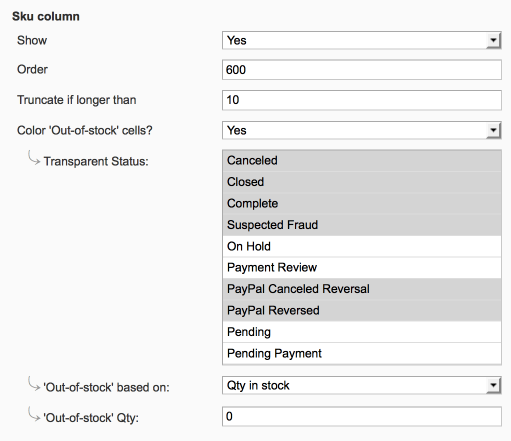
- "Transparent Status" is a multi-selectable box of statuses which you don't want to see stock status for.
- To keep things minimal and remove distracting elements, I'd only show status on current orders (no point seeing the current stock status for items which have been shipped).
- "Out-of-stock Qty" is the number which shows red on. Eg. if you run stock control so that items are removed from stock when an order is placed, then the 'error number' may be -1. If you want to show when you are low on stock, so that you can order more, maybe this number is 5.
Out-of-Stock Orders
You can see at-a-glance which orders are all in stock (or which have some items out of stock).
- Very handy to quickly get going with 'no-problem' orders, and leave the problem ones until later.
- You can filter to show only orders with all items in stock, and vice-versa.
- Choose your settings here : shipEasy Config > Grid Columns Setup / Stock column
- Same tips for transparent statuses as above apply.
- You can use different 'status is out' reasons for the different columns - eg. this column can flag up based on qty in stock, the sku flag could flag up based on the catalog 'stock status'. This can be a handy check for any backend shenanigans.
1-Click Contact Customers
Setting the templates and columns
This is a handy way to quickly contact a customer. You can set the options which show in the shipEasy Config > Grid Columns Setup, I'd turn off ones that you're not going to use:
You can set the templated texts with quite a lot of auto-fill options available:
There are 3 options:
- Comment : this will pop-up a window with two options:
- Admin comment - whatever is entered here is entered as an admin-only viewable comment in this order.
- Customer comment - whatever is entered here is entered as 'viewable on frontend' and emailed to the customer.
- Leave blank to only enter an admin comment - nothing will be emailed to the customer or viewable to them.
- Email : This will attempt to popup a new email window, pre-filled with your template text, and the customer email.
- Gmail : This will attempt to popup a new specifically-gMail window, pre-filled with your template text, and the customer email.
Sending the Messages
Now you have the comment icon showing up in the Orders Grid, just click it - you'll see a slide-down contact box appear, profiled with the Template you setup previously, and edited for this specific order.
Customise The Email Sent When 1-Click Sending From Order Grid
- Customise the template for the contents of the email
- This is done in the shipEasy config section.
- shipEasy will use the 'Order Update' transactional email template, replacing the 'order comments' section with the parsed contents of the message dropdown.
- If you don't yet have a custom Order Comment transactional email, go to SystemTransactional Emails and make one:

- Remember to make one for Order Update and one for Order Update Guest.
- Remember to set this new template in the Magento Email management section.
- As we're adding a comment related to an order, shipEasy will use the Order Comments email template.
- Go to SystemConfigSales > Sales Emails > Order Comments, and choose your shiny new template from the dropdown options.
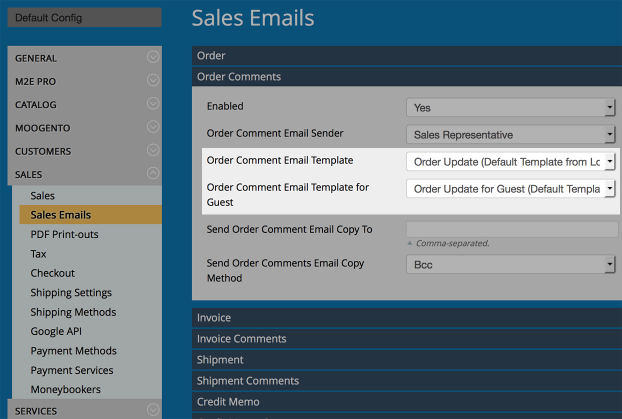
- ^ This shows the config section with Clean installed, but default Magento will have the same sections (just not looking as slick!).
Mass-processing Orders & Setting Order Status
Set multiple orders status, mass-Invoice, mass-ship, mass-hold - with one click.
- Eg. mass-ship all orders processed in a day.
How about making a custom status 'Boxed' so your customers have more detailed order status info.
- Less support emails.
- An easy group to select and mass-ship at the end of the day when they are actually picked up by the courier.
- Fast way to see which orders you're working on right now.
- Just select the orders that you want to mass-change status.
- shipEasy comes with an extra few buttons to help this out, eg. 'Select All' - this will select all orders which match your current filters.
- In the Action menu, select sE Change Status
- A new dropdown menu will appear, with your statuses.
- Choose the status that you want to change the order(s) to, and click 'Submit'
- Done!
- If you want to ship orders, choose Ship
- If some orders have not been Invoiced they will be set to a custom status Shipped - but not Complete.
- If you want to mark an order as Shipped *and* Complete, and are not sure if all selected orders have been Invoiced, choose Ship & Invoice - this will set any un-invoiced orders to Invoiced, and then Mark them as Shipped & Complete.
- Setting status is also an option via Barcode-scanning and CSV import in shipEasy.
Customise The Email Sent When Mass-Changing Status
Yes! With shipEasy you can send your customers emails when changing the order status.
There's two stages:
Set Magento transactional emails for different order statuses
Create some different transactional emails : System -> Transactional emails
First either edit an existing email there, or load up a new one from a template:
After you load it, you'll see that it has triggered a Magento connection with that status (in this example 'Shipped').
How shipEasy chooses which email to send
When sending emails with shipEasy (ie. choosing 'Notify customer? Yes' when changing status), shipEasy looks at what you're doing before deciding the correct email to send.
If you choose, in the secondary dropdown Notify customer > No then no emails are sent.
If you choose:
- sE Ship --> then the 'New Shipment' transactional email will be sent, per order.
- sE Invoice --> then the 'New Invoice' transactional email will be sent, per order.
- sE Ship & Invoice --> if the order wasn't already Invoiced, then the 'New Invoice' transactional email will be sent, per order, and then the 'New Shipment' email will be sent.
- sE Change Status --> then the 'Order Comment' transactional email will be sent, per order.
How to make & assign custom order statuses
This is a feature of Magento, not shipEasy but I'll explain it here. These order statuses and states come preset:
| Order Status | Order State |
|
|
- Each Order State represents a specific stage in the Magento order workflow.
- You can create custom Order Statuses, and assign them to any of the Order States.
- Head to SystemOrder Statuses
- Click Create New Status
- In the Status Information section, enter a Status Code
- This can be anything, but make it simple and descriptive.
- Enter Status Label - this is what will appear in the Order Status dropdown filters on the Orders Page.
- Click Save Status
Now we need to assign that new Status to a State.
- Back in SystemOrder Statuses, click Assign Status to State
- Under Assignment Informaton set Order Status to what you want, then
- Select the Order State to assign the previously-set Order Status.
- If you want this new Status to be the default one set for this State, select Use Order Status as Default
- Click Save Status Assignment
- Done! You can now set orders to this Status with shipEasy.



